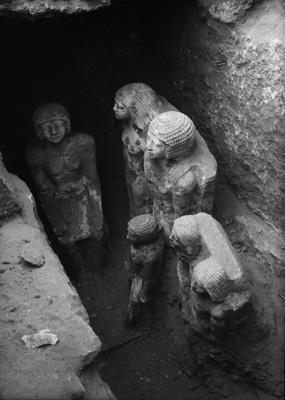|
The present website contains eight basic categories of materials, many of which derive from the original Harvard–MFA Expedition.
- about 3,810 tomb and monument records
- about 34,000 black-and-white excavation photographs taken between 1902 and 1942, as well as more recent color images
- about 21,163 ancient object records (finds)
- about 2,800 records on ancient Egyptians at Giza, as well as modern invidividuals related to the site
- about 3,105 Harvard-MFA Expedition diary pages in English, with another 4,000 Arabic diary pages (and translations) in preparation
- about 10,000 maps and plans, ranging from entire Giza cemeteries to individual burial shafts, with another 7,000 illustrations in preparation
- about 400 books and articles on Giza (a digital Library of PDF files), linked directly to tomb, object, and people records
- about 4,463 pages of unpublished manuscripts by George Reisner, with additional documents in preparation
- experiments in Interactive Web technologies, such as zoomable satellite photos and 1,400 360-degree panoramic views of the site using Quicktime Virtual Reality (QTVR).
The Giza Archives is a work in progress that will evolve to better serve the scholarly community. We strive to resolve inconsistencies and discrepancies in the original excavation records and numbering schemes, and look forward to learning of mistakes, solutions, and suggestions from our web users. Please see the Contact page for details on how to communicate with Giza Archives staff.
Additional archaeological materials, old and new, published and unpublished, black-and-white and color, are in preparation. Please see the News section of this website for periodic updates.
|

